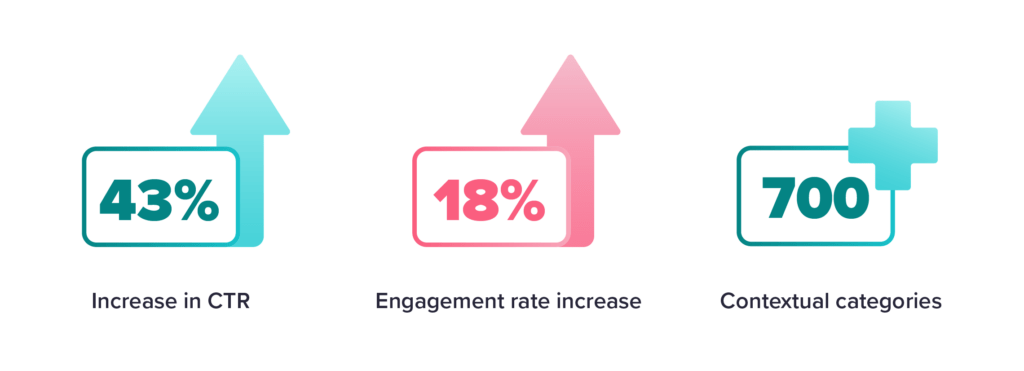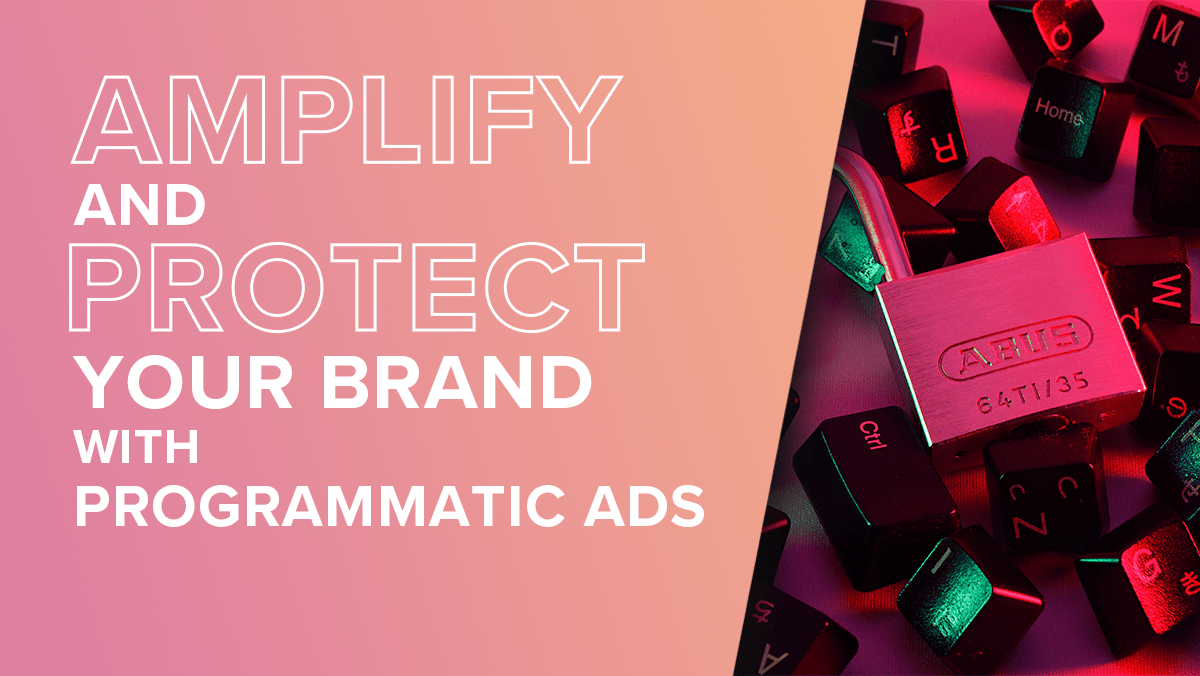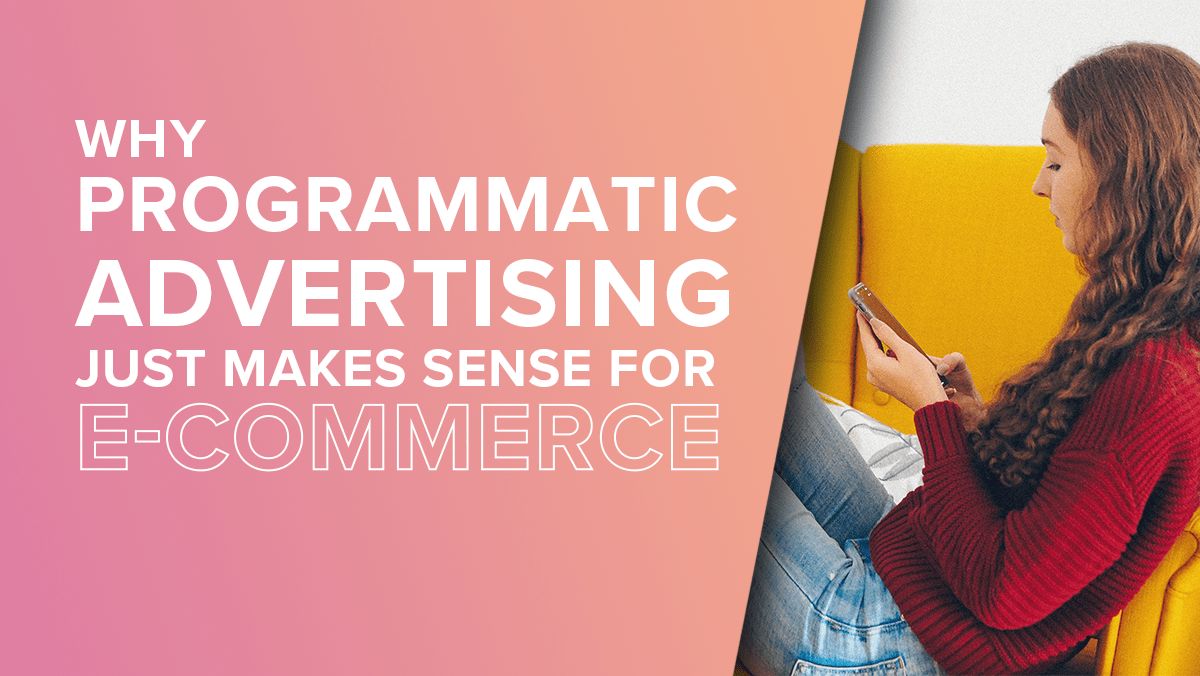What is Contextual Advertising: The Ultimate 2024 Guide
September 4, 2023
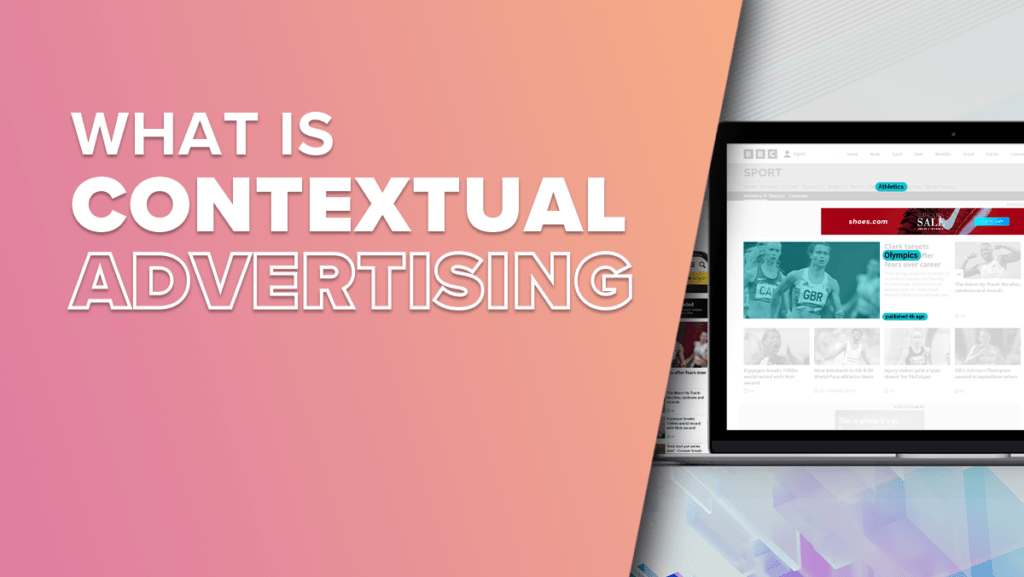
In the race to find alternatives to cookie-based behavioral targeting, contextual advertising has emerged as a leading solution for marketers.
Whether new to programmatic advertising or a seasoned pro, contextual targeting is a need-to-know hot topic. Contextual advertising is booming, projected to increase from $199.8B in 2022 to $562.1B in 2023.

Let’s explore contextual advertising, how it works, and what it means for marketers in 2023.
But First, a Brief History of Contextual
Contextual targeting is one of the oldest forms of advertising.
Think about any newspaper, magazine, or billboard: the advertiser makes assumptions about the audience based on context and tailors their ads to fit.
For example, a high-end clothing brand places ads for its new collection in Vogue, not Popular Mechanics.
That’s because the context of the ad tells us a lot about the audience’s interests and demographics.
This audience will likely be more engaged because they have opted to interact with the content.
Contextual vs. behavioral targeting
As digital content entered the scene over the past few decades, marketers found ways to use user-specific identifiers for ultra-precise targeting. This is known as behavioral targeting.
A classic example of behavioral targeting is a company assigning a cookie to a potential customer who browses their site.
Let’s say this user clicks on a few product pages for hiking boots but doesn’t buy anything. The company can use data about that user’s behavior to target them elsewhere on the internet.
Historically, advertisers have preferred behavioral targeting over contextual in programmatic advertising due to its greater scalability.
But the age of identity-based behavioral targeting is ending, and contextual targeting has become incredibly scalable due to AI.
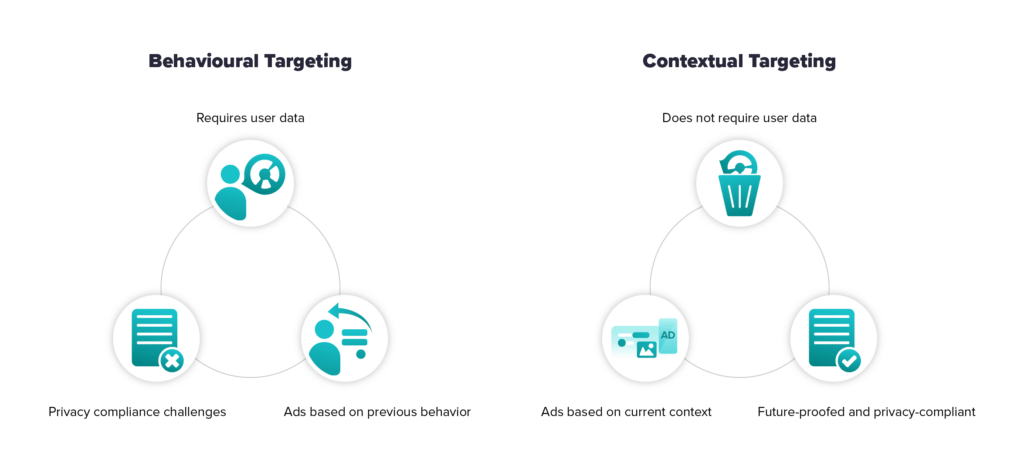
What does contextual targeting mean in programmatic advertising?
Contextual targeting is a programmatic advertising approach that displays relevant ads to users based on the content they’re interacting with.
By analyzing certain attributes of a webpage (such as keywords, subjects, or themes), contextual targeting allows advertisers to present ads directly related to the content the consumer is viewing.
This increases the likelihood of engagement, making contextual targeting a powerful tool for brands aiming to connect with their audience more meaningfully and personally.
How does contextual targeting work?
Contextual advertising works best when the ads appear on content that is relevant and recent. Why? News articles are the majority of new content published on the internet. Unfortunately, news-related content can have a pretty short lifespan.
In fact, 74% of new articles experience peak traffic on their publication day; an additional 25% peak the day after.
So how can contextual targeting help ensure that ads appear next to content that’s fresh and interesting?
Contextual solutions determine content relevance and recency based on a range of content factors, including:
- URL domain
- Keywords
- Category
- Semantics
- Meta tags
- Bidstream signals
Each content attribute provides valuable information to help align ads with context.
For example, keyword targeting serves ads based on specific keywords found in content the user is viewing, while category targeting places ads based on general content categories such as beauty, automotive, or finance.
Categories generally refer to definitions found in IAB Tech Lab’s Content Taxonomy.
Semantic targeting is a more advanced contextual technique that uses machine learning to understand the meaning and sentiment of words on a webpage to serve highly relevant ads.
Depending on the technology used, a potential drawback of contextual targeting is that most solutions take hours to crawl and index new content for targeting.
Slow indexing means ads might display on content that already feels outdated. Fortunately, more cutting-edge options are now available, so advertisers can target fresh content in milliseconds, not hours. (More on that here!)
Benefits of Contextual Targeting
As the advertising industry evolves, there is a growing recognition that engagement and effectiveness stem from relevance rather than hyper-personalization.
Contextual targeting allows advertisers to connect their ads and the content users consume, leading to better engagement and interactions.
This shift toward relevance aligns well with the goals of privacy regulations and user preferences for less invasive ad targeting.
Contextual targeting offers a wealth of benefits for both marketers and consumers.
Benefits for Marketers
- Stronger brand affinity and consumer loyalty. Placing your brand next to content that your audience cares about sparks a powerful affiliation between the ad and the context.
- Better engagement. Users were 16% more likely to engage with ads served near related content.
- Brand safety. Contextual ads ensure brand alignment, enhance user trust, and offer more brand safety options. For example, sentiment analysis can help brands keep their ads away from potentially negative contexts like news stories about natural disasters.
(Source: Integral Ad Science, 2023)
Benefits for Consumers
- Better ad experience: 63% of consumers prefer to see contextually-relevant ads and actually find these ads or the featured products to be interesting. Consumers also find contextual ads useful, saying contextually-relevant ads are more likely to feature products they want or need.
- Better content experience. In addition to a better ad experience, consumers’ overall content experience improves because contextual ads tend to be less disruptive than other forms of advertising. In fact, 26% of consumers said that contextually-relevant ads helped them feel more immersed in the content they were consuming, according to a recent report from Integral Ad Science.
- Privacy peace of mind. Contextual advertising targets based on content, not user data, helping to ease consumers’ privacy concerns.
(Source: Integral Ad Science, 2023)
How to choose the best contextual targeting solution
Despite the well-deserved hype around contextual targeting, not all platforms are created equal. A 2023 study by TPA Digital ran identical campaigns on three different contextual platforms simultaneously.
The three solutions achieved drastically different results across two critical factors of contextual targeting: recency and relevance.
The campaigns centered around a highly-viewed sports game.
The experiment measured how many ad impressions appeared on sports-related webpages and how many ads appeared alongside content published on the same day.
On the recency front, one platform (Verve Group’s Moments.AI) successfully targeted same-day URLs for 96% of impressions.
The other two vendors’ impressions appeared on same-day URLs only 36% and 49.6% of the time.
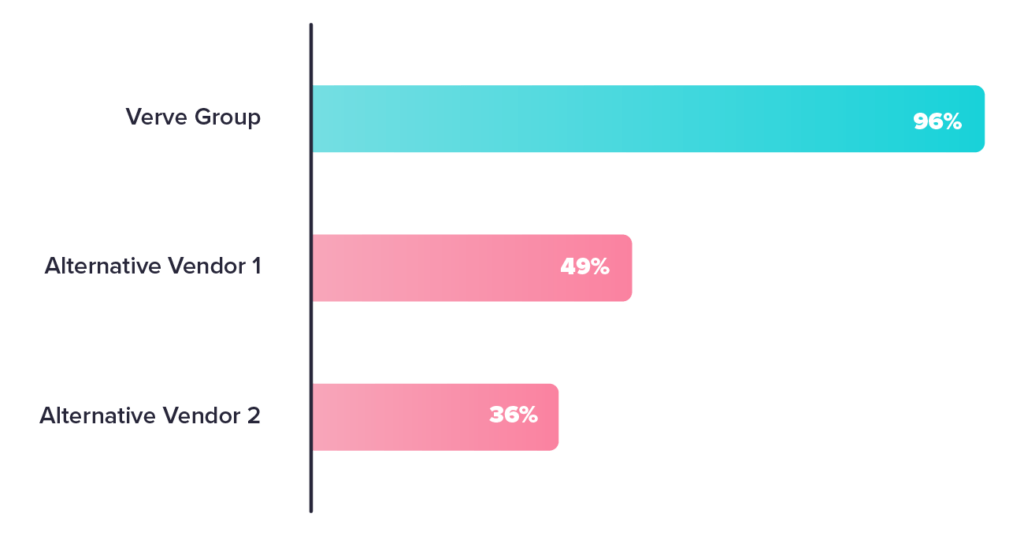
The three contextual platforms’ performance varied even more drastically for relevance.
Moments.AI again outperformed the alternative platforms, with 19x accuracy when measured by the percentage of ad impressions on relevant URLs.
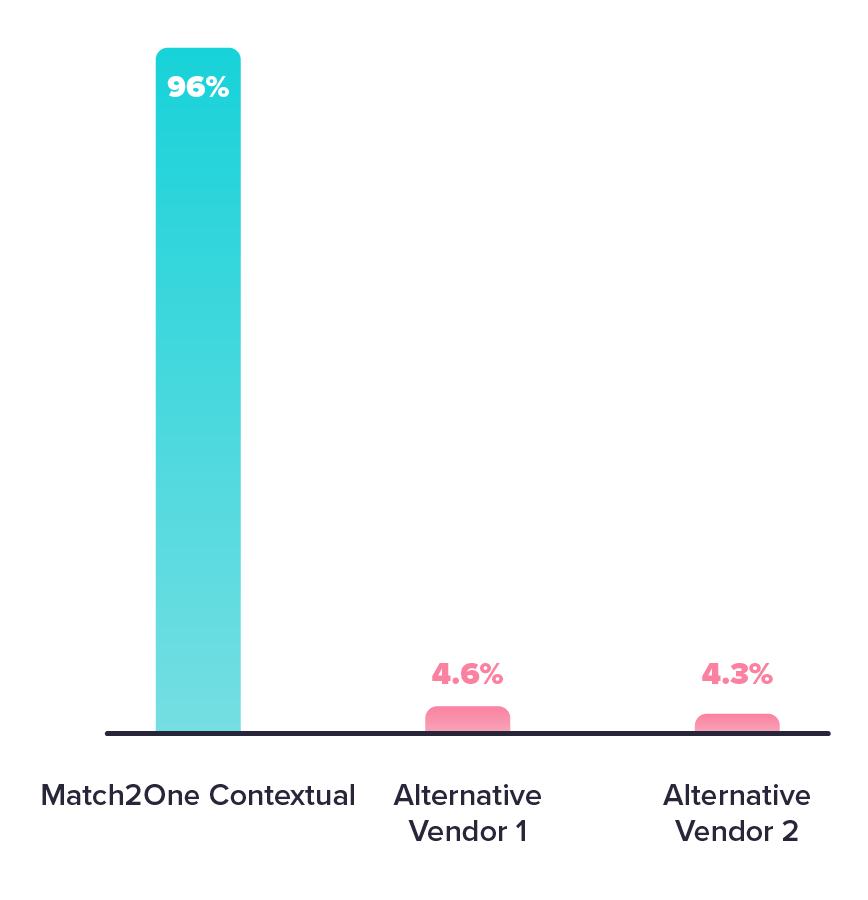
Solving for Recency and Relevance
With such a vast range of results, how can marketers know which contextual targeting solution to choose? When evaluating a potential contextual platform, ask the potential vendor about which parameters its solution uses for indexing,
Unlike traditional contextual platforms that crawl the web and classify by URL domain only, Moments.AI (now available via Match2One) identifies relevant content by analyzing many dimensions.
This means your brand has access to fresh content instantly. Match2One’s Contextual Advertising then pairs your brand with top-notch contextual segments to capture consumer attention in real time.
Best of all, Match2Moments does all this in milliseconds, not hours.
The result? Precise, accurate audience targeting that drives real results.
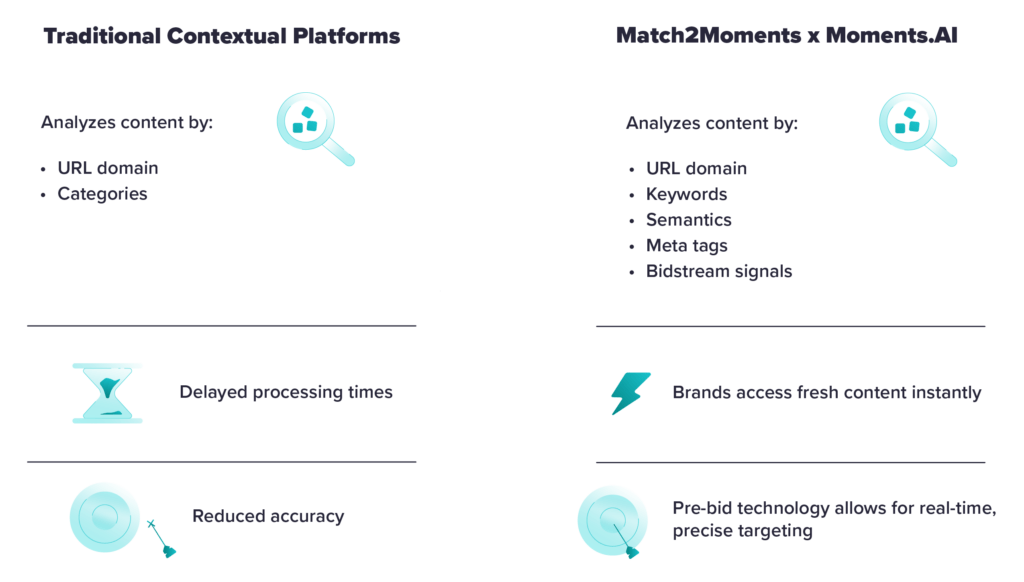
How easily you can set up your contextual advertising campaign
Contextual targeting is an advanced technology, but getting started with it doesn’t have to be hard.
Brands of all sizes can now benefit from leading-edge contextual targeting via Match2One’s intuitive, self-serve advertising platform. Here’s how it works:
- Log into your Match2One account (or sign up for a new one!)
- Define your contextual category, set your budget, add captivating banners, and hit launch.
- As soon as your campaign is live, Match2One instantly targets the freshest content on the internet, matching the context of your chosen moments. Advanced technology powered by Moments.AI crawls the internet and collects contextual signals within 20 milliseconds from being published.
- The Match2One platform will then automatically show your brand’s ads to users at the exact moment they’re engaged with content that aligns to your campaign or brand.
- Engage audiences and gain valuable insights on how well their ads perform with their target audience, all in an intuitive dashboard.
Marketers using Match2One Contextual Advertising have already seen a 43% increase in CTR and 18% increase in engagement rates.
With over 700 content categories to leverage, contextual advertising through Match2One can be a gamechanger for any brand.
